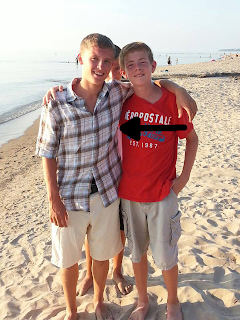Project Overview: There were two parts to this project. The first was a mini egg drop, where limited resources were given such as paper, popsicle sticks, and rubber bands. Our intention was to protect the egg from increasing drops up to several meters. In the second part, we designed a more effective design with materials we could bring from home, with the goal of protecting the egg from falls of one to two stories.
Technological Concepts: Quite a few concepts were learned in this project. We had to learn how aerodynamics affected the fall of an object. We learned how to manipulate how impulses were exerted on the design, where increasing the distance and thus time decreased the force applied to the egg. Crumple zones and "seat-belts" were used to accomplish this mainly. Minimizing acceleration, or rate of change in velocity over time, was important to some designs. Managing inertia, or the tendency for objects to remain in motion or at rest unless acted on by an outside force, was important for all designs to consider.
Learning Goals: While learning the concepts was important, this project focused on applying the design process with an actual goal. We learned to research, brainstorm ideas, implement them, test them, and use feedback to improve our designs. Well thought out, effective designs were the goal of this process, whether we had limited or abundant resources.
 |
| Mini Egg-drop Design |
Mini Egg-Drop Design: We used an absorbing pad, with a net of string that would absorb the impact. This idea implementation failed, but we also had rubber bands above the egg attached to popsicle sticks, which were very effective at absorbing the force. A rubber band around the side secured the egg. However, the sides of the egg were left entirely vulnerable. In the second test, the design fell on its side, and the egg instantly broke.
 |
| Big Egg-Drop Design, before cotton |
Our design succeeded for the one-story drop, with no damage to the egg at all, or the design. On the two-story drop, our poor aerodynamics caused the box to flip and land on the railing on its side, which our design was not intended for. It broke quite badly on this test.
Positive Feedback: The project did a good job of teaching the design process, and I was reasonably satisfied with the way our second design did its job. Throughout the design, we used feedback on mini-tests and added cotton and egg carton segments to improve its performance.
Redesign: If given a second attempt at the project, the premise would be very similar. However, a square box with rubber bands from all six sides would be used for stability from any angle. Foam would be used inside the box as a more effective method of absorbing force. Perhaps even foam on the outsides would be used to truly safeguard the egg.
Technological Resources: We had me, George Lancaster, and the advice of Dr. Sartori. This labor was enacted by us, with the information we held. Time was also a resource given into this several week project. Lastly, materials were the limited materials given by Dr. Sartori in the mini egg-drop, and the box, rubber bands, cotton, and egg cartons for the big egg-drop.
Biggest Challenge: The biggest challenge for the mini egg drop was trying to keep the egg secure in the design, in a way that it wouldn't jostle. For the big egg drop, weight was our main problem. We had the deftness and dexterity to create the design, but we really couldn't put as much padding in as we wanted to to due to the weight limit.
What We Learned: George and I learned how to use the design process to decide on a given design, and make an effective device that could accomplish a given goal, by a given time. I was able to apply concepts that I learned last year to an actual application. Lastly, George and I learned that it was wise not to stick perfectly to our design; by remaining flexible and open to new ideas, we made our design far more effective that it would have been otherwise.
 |
| We weren't allowed to use parachutes for the big egg drop, but can you imagine how magical using one in real life would be! |



